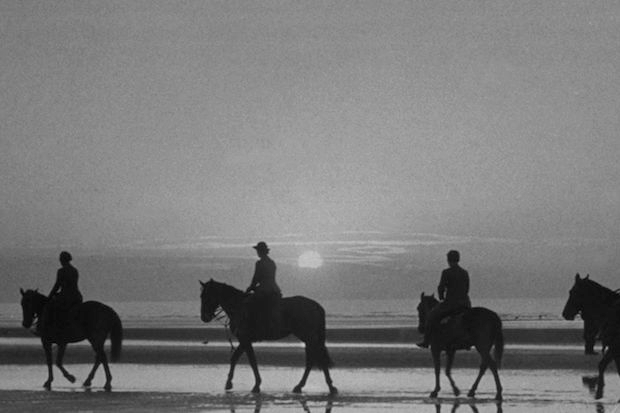From ‘Dawn on Box Hill‘, The Spectator, 26 June 1915:
AS we rode down the gentle eastern slope of Ranmore Common we noticed that we could see our horses’ ears. The statement seems commonplace, but for the last two hours we had mostly taken not only our horses’ ears but our horses’ heads on trust. In the wooded bridle-ways on the summit of the North Downs it is pitch dark even on the night before the summer solstice. We had had two hours of such bridle’ paths, with only an occasional” bald” piece of Down where the stars and the open vault of sky made it poseible to see the man in front and the man behind in the column. We left Ranmore Church a few minutes past 1.30, and by twenty minutes to two there was no mistake as to the coming of the dawn. Already we were beginning to note that common but always deeply moving miracle—the paling of the stars in the sky. Already the best-marked features of the landscape were beginning to emerge. Across the valley Box Hill loomed up like a headland pushing out into the sea. Against the faint indeterminate pearl of the sky, the very tint of a Quakeress’s dress, the rough shoulder of the hill, not unlike that of a truncated Gibraltar, stood out in sable—a rusty black, not a deep black like the blacks of sunset. The vision of our goal was only for a moment allowed. Soon we were once more in the darkness and mystery of the woods, and once more intent on dodging projecting boughs or avoiding deviations to the right or left, and therefore with no eyes for the landscape, even if it had been visible through gaps. When, however, we emerged from these last ten minutes of woodland there was no mistake about the light. The great hedge at Camilla Lacy showed up quite clearly, though one could not say offhand whether it were box or holly. The short halt at Burford Bridge at last exhibited the column which at the start and for the past two and a half hours had been taken on trust, or its existence only proved by the passing of words of command down its length. As we moved up the long green roller of the Down opposite George Meredith’s summer-house the Guides were clear enough as to form, though colours were invisible. At that time no man could have said whether their uniforms were green or khaki or grey. By 2.30 we had reached the little green to the east of the fort, a green of some five or six acres, dead flat and surrounded by box-trees, oaks, ashes, and thorns. This was our goal, “the highest point of Box Hill,” and we had reached it exactly at the hour laid down in our time-table.






Comments